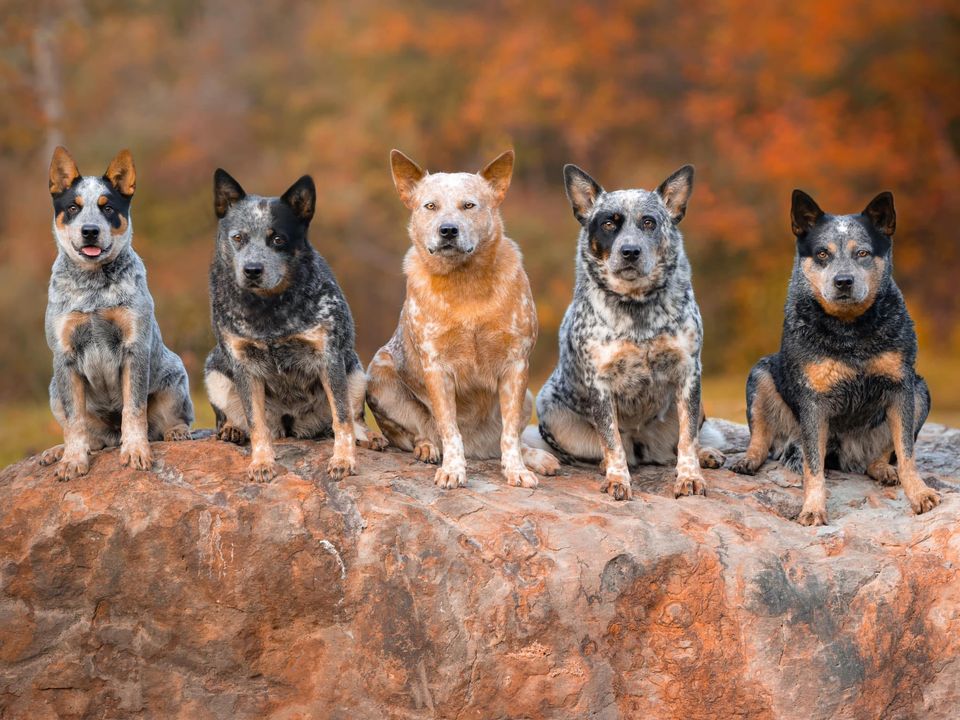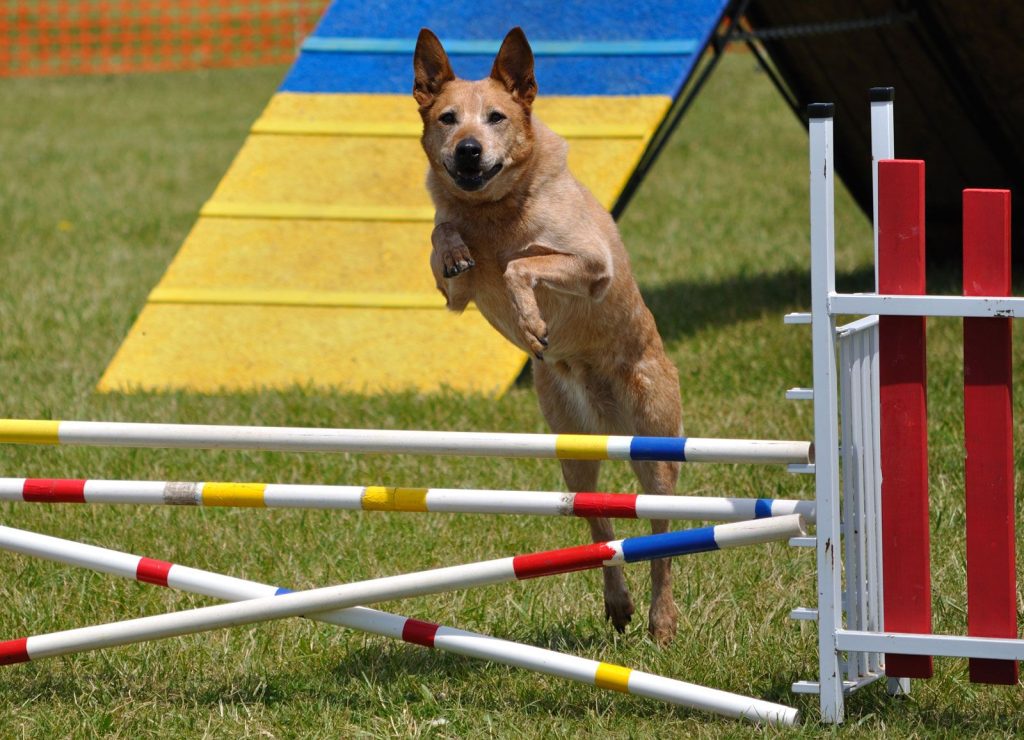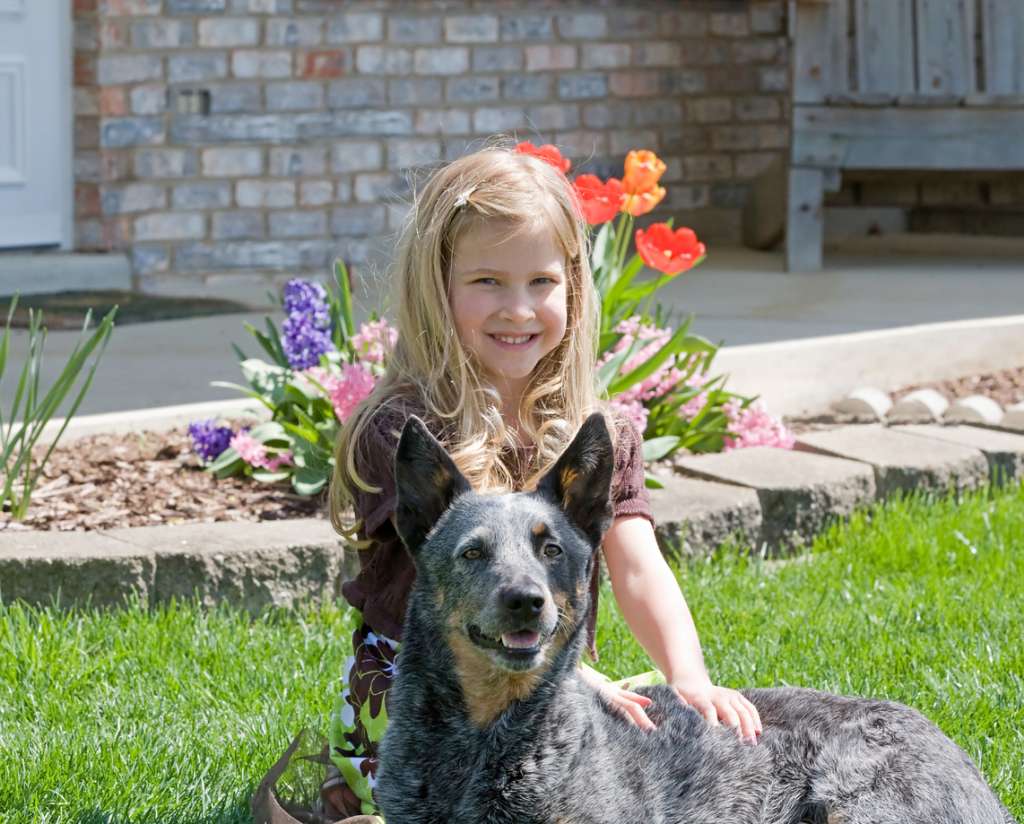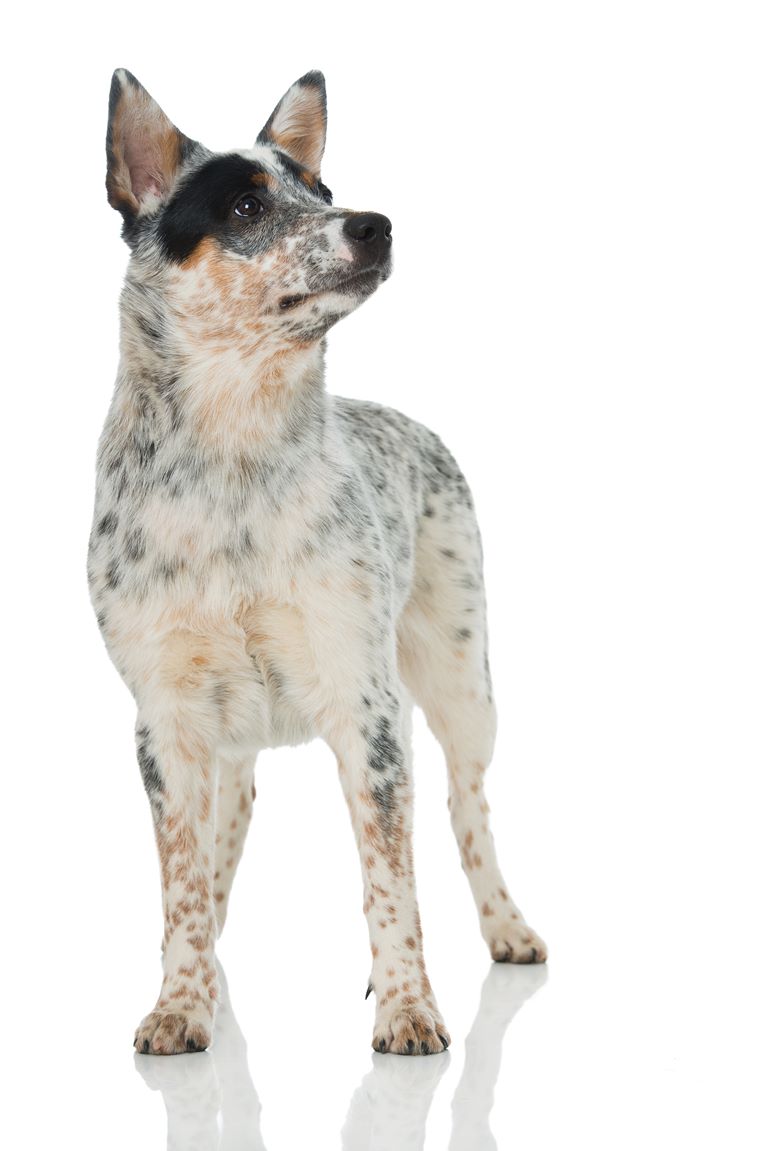Are you considering adding an Australian Cattle Dog to your family? If so, you’re in for a treat! This breed, also known as the Blue Heeler, is an energetic and intelligent working dog that has become a popular choice for pet owners. Originally bred in Australia for herding cattle, this breed is known for its loyalty, agility, and versatility. However, before bringing home an Australian Cattle Dog, it’s important to understand their unique needs and characteristics to ensure that they are a good fit for your lifestyle and home environment.
Breed Category: Herding
Country of Origin: Australia
Average Size:46-51 cm
Average Weight:16-22 kg
Average Life Span: 12-14 years
Grooming Requirements: Moderate
Exercise Requirements:High
History and Origin
The Australian Cattle Dog, also known as the Blue Heeler or Queensland Heeler, is a breed of herding dog that originated in Australia in the 19th century. The breed was developed by a cattle rancher named Thomas Hall, who wanted a dog that could handle the harsh conditions of the Australian outback and help him manage his cattle.
Hall began by crossing a number of different breeds, including the Dingo, the Collie, and the Dalmatian. He eventually settled on a breed that was tough, intelligent, and had a natural instinct for herding. The result was the Australian Cattle Dog, which quickly became popular among ranchers and farmers throughout Australia.
The breed’s popularity continued to grow throughout the 20th century, and it eventually made its way to the United States and other parts of the world. Today, the Australian Cattle Dog is recognized as a distinct breed by the American Kennel Club and other major dog organizations.
One of the most distinctive features of the Australian Cattle Dog is its blue or red speckled coat, which is designed to help it blend in with the cattle it herds. The breed is also known for its high energy level, intelligence, and loyalty to its owners.
Despite its popularity, the Australian Cattle Dog is not without its challenges. The breed is prone to a number of health problems, including hip dysplasia, deafness, and eye problems. It also requires a lot of exercise and mental stimulation, which can be difficult for some owners to provide.
Despite these challenges, the Australian Cattle Dog remains a beloved breed among ranchers, farmers, and dog enthusiasts around the world. Its unique history and distinctive characteristics make it a fascinating breed to study and appreciate.

Size and Breed Category
The Australian Cattle Dog, also known as the Blue Heeler or Queensland Heeler, is a medium-sized breed of dog that was originally bred in Australia for herding cattle. They typically weigh between 15-22 kg and stand at a height of 43-51 cm at the shoulder. Their coat is short and dense, with a range of colours including blue, red, and blue speckled. The breed is known for their high energy levels and intelligence, making them excellent working dogs.
In terms of breed category, the Australian Cattle Dog falls under the herding group. This group is made up of breeds that were originally developed for herding livestock, such as sheep and cattle. As a result, these dogs tend to be highly active and intelligent, with a strong work ethic. Other breeds in this group include the Border Collie, German Shepherd, and Welsh Corgi. Due to their herding instincts, Australian Cattle Dogs may not be suitable for households with small children or other pets, as they may try to herd them. However, with proper training and socialisation, they can make loyal and loving companions.
Fur Length and Colour
The fur of the Australian Cattle Dog is short and dense, providing protection from the harsh Australian climate. The fur is typically blue or red speckled, with a mottled or patchy appearance. The blue speckled variety has a blue-grey base with black or tan spots, while the red speckled variety has a red base with darker red or black spots. The fur is often described as having a “tiger-striped” appearance, with the speckles creating a unique and striking pattern. The fur is easy to maintain and requires minimal grooming, making it a practical choice for a working dog.
The colour of the Australian Cattle Dog’s fur is an important characteristic of the breed. The blue and red speckled varieties are the most common, but there are also solid blue and solid red varieties. The blue and red speckled varieties are preferred by breeders, as they are considered to be the most distinctive and attractive. The fur colour can vary in intensity, with some dogs having a more muted or faded appearance. The fur is an important part of the breed’s identity, and is often used to distinguish Australian Cattle Dogs from other breeds.

Termperament and Trainability
Australian Cattle Dogs are known for their high energy and strong work ethic. They are a breed that requires a lot of physical and mental stimulation to keep them happy and healthy. They are highly intelligent and have a natural instinct to herd, making them excellent working dogs. However, this also means that they can be quite stubborn and independent, which can make training a challenge. It is important to establish a strong leadership role early on and use positive reinforcement techniques to encourage good behavior. With patience and consistency, Australian Cattle Dogs can be trained to excel in a variety of activities, including obedience, agility, and herding.
In terms of temperament, Australian Cattle Dogs are known for their loyalty and protective nature. They are fiercely devoted to their families and can be wary of strangers. This makes them excellent watchdogs, but it also means that they require early socialization to prevent aggression towards unfamiliar people or animals. They are also known for their high prey drive, which can make them unsuitable for homes with small pets. Australian Cattle Dogs thrive in active households where they can participate in regular exercise and mental stimulation. They are not a breed for everyone, but for those who are willing to put in the time and effort, they can make wonderful companions and working dogs.

Known Health Conditions
Australian Cattle Dogs are prone to certain health conditions that owners should be aware of. One of the most common issues is hip dysplasia, which is a genetic condition that affects the hip joint. This can cause pain, lameness, and arthritis in the affected joint. Another condition that can affect Australian Cattle Dogs is progressive retinal atrophy, which is a degenerative disease that can lead to blindness. This condition is also genetic and can be screened for before breeding. Additionally, Australian Cattle Dogs can be prone to deafness, which can be caused by a genetic mutation or exposure to loud noises. It is important for owners to be aware of these conditions and to work with a reputable breeder who screens for them.
Another health condition that can affect Australian Cattle Dogs is elbow dysplasia, which is similar to hip dysplasia but affects the elbow joint. This can cause lameness, pain, and arthritis in the affected joint. Australian Cattle Dogs can also be prone to allergies, which can cause skin irritation, itching, and hair loss. These allergies can be caused by food, environmental factors, or parasites. Finally, Australian Cattle Dogs can be at risk for certain types of cancer, including lymphoma and osteosarcoma. It is important for owners to be aware of the signs and symptoms of these conditions and to work with a veterinarian to provide the best possible care for their dog.
Openness to Strangers
Australian Cattle Dogs, also known as Blue Heelers or Queensland Heelers, have a reputation for being wary of strangers. This is due to their breeding as working dogs, where they were trained to protect their owners and their property. However, with proper socialization and training, they can become friendly and affectionate towards strangers. They are known to be loyal and protective of their family, but they can also be independent and stubborn. Australian Cattle Dogs are highly intelligent and require mental and physical stimulation to prevent boredom and destructive behavior. They are a popular breed for agility and obedience competitions due to their athleticism and trainability.
Australian Cattle Dogs have a strong prey drive and may not be suitable for households with small pets such as cats or rabbits. They are also known to be vocal and may bark excessively if not properly trained. Australian Cattle Dogs require regular exercise and a fenced yard to prevent them from wandering off. They have a short, dense coat that requires minimal grooming, but they shed heavily twice a year. Australian Cattle Dogs are a high-energy breed that requires an experienced owner who can provide them with the physical and mental stimulation they need to thrive. With the right training and socialization, they can make loyal and loving companions.
Playfulness Level
The Australian Cattle Dog is a highly energetic and playful breed that requires plenty of exercise and mental stimulation to keep them happy and healthy. These dogs were originally bred for herding cattle in the harsh Australian outback, and as such, they have a strong work ethic and a natural instinct to chase and round up anything that moves. This makes them excellent companions for active individuals or families who enjoy outdoor activities such as hiking, running, or playing fetch.
Despite their high energy levels, Australian Cattle Dogs are also known for their affectionate and loyal nature towards their owners. They thrive on human companionship and are happiest when they are included in family activities. However, due to their strong herding instincts, they may be wary of strangers and other animals, so early socialization and training are essential to ensure they develop into well-adjusted and well-behaved dogs. Overall, the Australian Cattle Dog is a fun-loving and devoted breed that makes an excellent companion for those who are willing to provide them with the exercise and attention they need.
Suitability as a Pet for Children
Australian Cattle Dogs, also known as Blue Heelers or Queensland Heelers, have a high energy level and require plenty of exercise and mental stimulation. They are intelligent and loyal dogs that bond closely with their owners. Due to their herding instincts, they may try to herd children and nip at their heels, so early socialization and training is important. They are generally good with children, but may be too active for very young children or those who are not used to dogs. Australian Cattle Dogs have a short, dense coat that requires minimal grooming.

Exercise Needs
Australian Cattle Dogs, also known as Blue Heelers or Queensland Heelers, are highly active and energetic dogs that require plenty of exercise to maintain their physical and mental health. These dogs were originally bred to work on farms and ranches, herding cattle and other livestock, and they have a natural instinct to run, chase, and play. As such, they need at least an hour of vigorous exercise every day, such as running, hiking, or playing fetch. They also benefit from activities that challenge their minds, such as obedience training, agility courses, or puzzle toys. Without enough exercise and mental stimulation, Australian Cattle Dogs can become bored, restless, and destructive, and may develop behavioural problems such as excessive barking, digging, or chewing.
In addition to regular exercise, Australian Cattle Dogs also require a balanced and nutritious diet to support their active lifestyle. These dogs have a high metabolism and burn a lot of calories, so they need a diet that is rich in protein, fat, and carbohydrates. They also need plenty of fresh water to stay hydrated, especially during hot weather or intense exercise. Owners should consult with a veterinarian or animal nutritionist to determine the best diet for their individual dog, based on their age, weight, activity level, and health status. With proper exercise and nutrition, Australian Cattle Dogs can live long, healthy, and happy lives as loyal and devoted companions.

Suitability for a Multi-Pet Family
Australian Cattle Dogs, also known as Blue Heelers or Queensland Heelers, have a reputation for being highly energetic and intelligent. They were originally bred for herding cattle in the harsh Australian outback, and as such, they have a strong prey drive. This means that they may not get along well with smaller pets such as cats or rabbits, as they may see them as prey. However, with proper socialization and training, Australian Cattle Dogs can learn to coexist peacefully with other pets in the household.
Housing Requirements
Australian Cattle Dogs, also known as Blue Heelers or Queensland Heelers, were originally bred for herding cattle in the harsh Australian outback. As such, they require a home that provides ample space for exercise and play. A large, securely fenced yard is ideal for these energetic dogs to run and play in. They also benefit from regular walks and hikes to keep them physically and mentally stimulated. In addition to space, Australian Cattle Dogs require a comfortable and sheltered area to rest and sleep. A cozy dog bed or crate in a quiet area of the home can provide a safe and comfortable retreat for these hardworking dogs.
Proper nutrition is also important for the health and well-being of Australian Cattle Dogs. As a breed that is prone to obesity, it is important to provide them with a balanced diet that meets their nutritional needs without overfeeding. Fresh water should be available at all times, especially during hot weather when these dogs are prone to overheating. Regular grooming is also necessary to keep their short, dense coats in good condition. Brushing once a week can help to remove loose hair and prevent matting. With the right care and attention, Australian Cattle Dogs can thrive in a loving and supportive home environment.
Summary
Australian Cattle Dogs, also known as Blue Heelers or Queensland Heelers, were originally bred in Australia for herding cattle. They are highly intelligent, energetic and require a lot of exercise and mental stimulation. Due to their strong herding instincts, they may not be suitable for families with small children or other pets. However, with proper training and socialization, they can make loyal and affectionate companions for active individuals or families who are willing to provide them with the necessary exercise and mental stimulation.
Australian Cattle Dog FAQS
Australian Cattle Dogs are intelligent and eager to please, but can be stubborn. Consistent training and positive reinforcement is key.
Australian Cattle Dogs can be good with children if they are socialized properly and trained from a young age.
Australian Cattle Dogs can be good with other pets if they are socialized properly and introduced slowly. However, they have a strong prey drive and may not be suitable for homes with small animals.
Australian Cattle Dogs are not recommended for apartment living as they require a lot of space and exercise.
Australian Cattle Dogs are known to be vocal and may bark to alert their owners of strangers or other animals.
Australian Cattle Dogs are generally healthy, but can be prone to hip dysplasia and deafness.
Australian Cattle Dogs have a lifespan of 12-15 years.
Australian Cattle Dogs are high-energy dogs and require at least 1-2 hours of exercise per day.
Australian Cattle Dogs have a short, dense coat and only need to be brushed once a week.
The average weight of an Australian Cattle Dog is between 15-22 kg.
